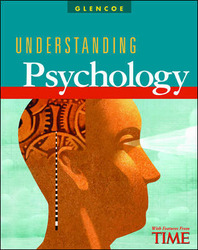
Understanding PsychologyChapter 11: Thinking and LanguageChapter OverviewsChapter 11 focuses on thinking and language and the methods we use to solve problems, create ideas, and express our thoughts. Section 1 defines thinking as changing and reorganizing the information stored in memory in order to create new or transformed information. Thinking depends on units, or devices, of thought which include images, symbols, concepts, prototypes, and rules. This section describes the kinds of thinking —directed or convergent, nondirected or divergent, and metacognition—and the strategies and obstacles of problem solving. Section 2 examines the relationship between language and thought. Language is a system of communication that uses rules to make and combine symbols in ways that produce meaningful words and sentences. This section defines the four parts of language—phonemes, morphemes, syntax, and semantics —and discusses whether language acquisition is a result of nurture or nature (biology). Also explained in this section, are the development of language in infants and the effects of linguistic relativity. |  |















